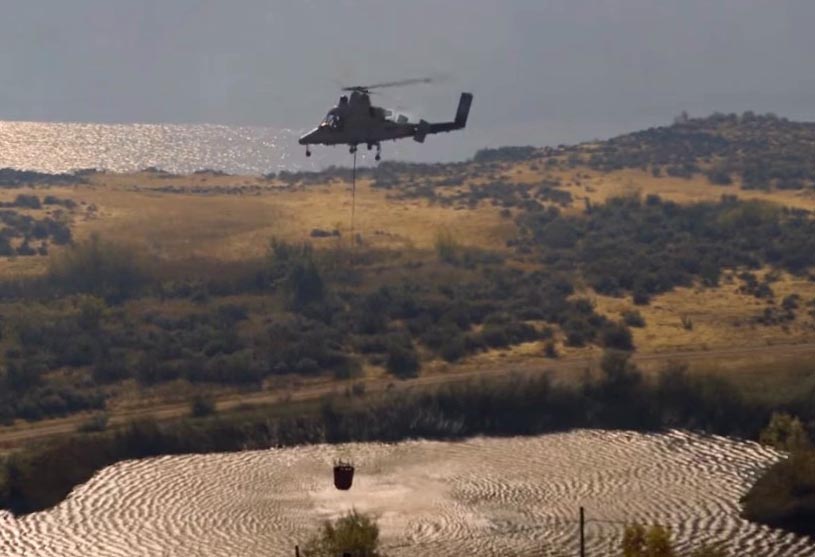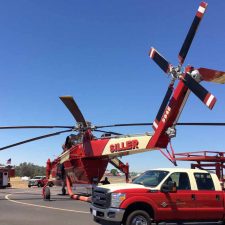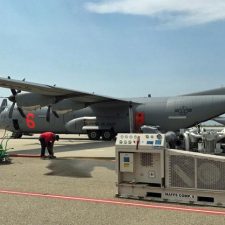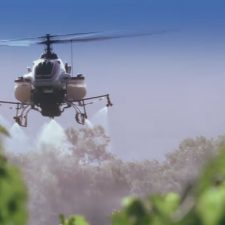An Erickson Air-Crane just started its summer contract with the Los Angeles City Fire Department.
Tag: California
Video of water drop at night
@KTLA @KTLAMorningNews Hacienda Heights LA Hill Fire | Helicopter Water Drop pic.twitter.com/deVler2eKG
— Sasan. (@SaussyBoi) August 1, 2017
Notice how the fire intensity decreases after the water drop on this southern California fire Monday night.
Helicopters and a C-130 at the Detwiler Fire
These photos were taken by CAL FIRE at a spot fire on the Detwiler Fire and at the helibase off Highway 49 north of Mariposa, California Thursday July 27. A spot fire added another 100 acres, to bring the current size up to 81,650 acres.

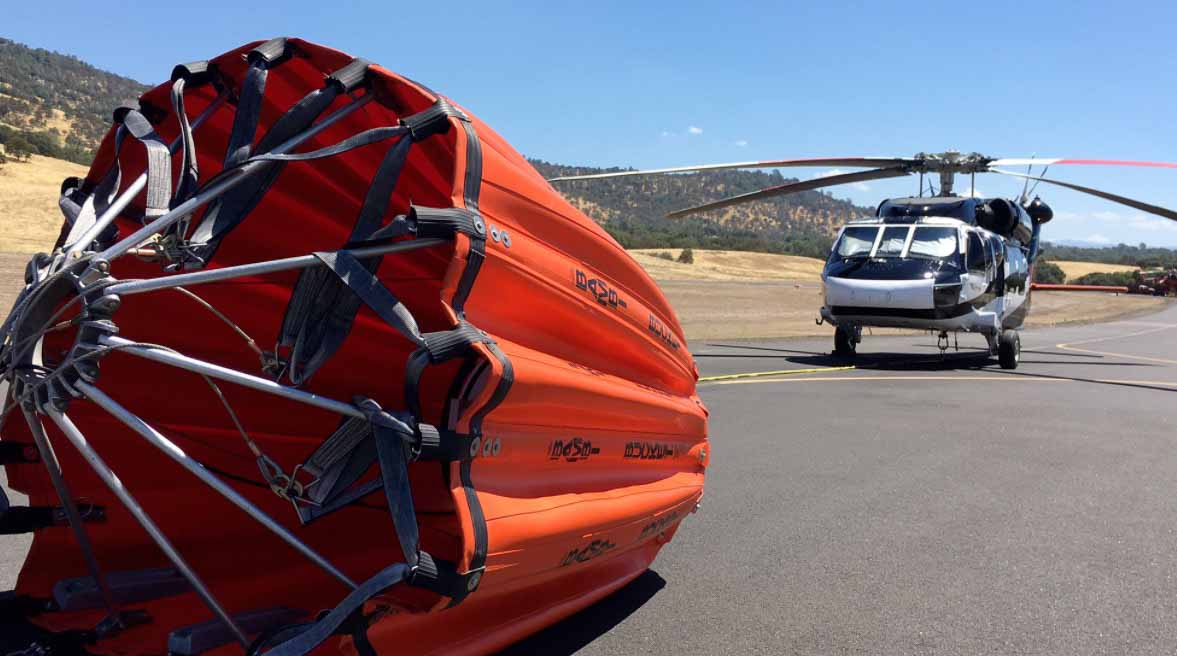
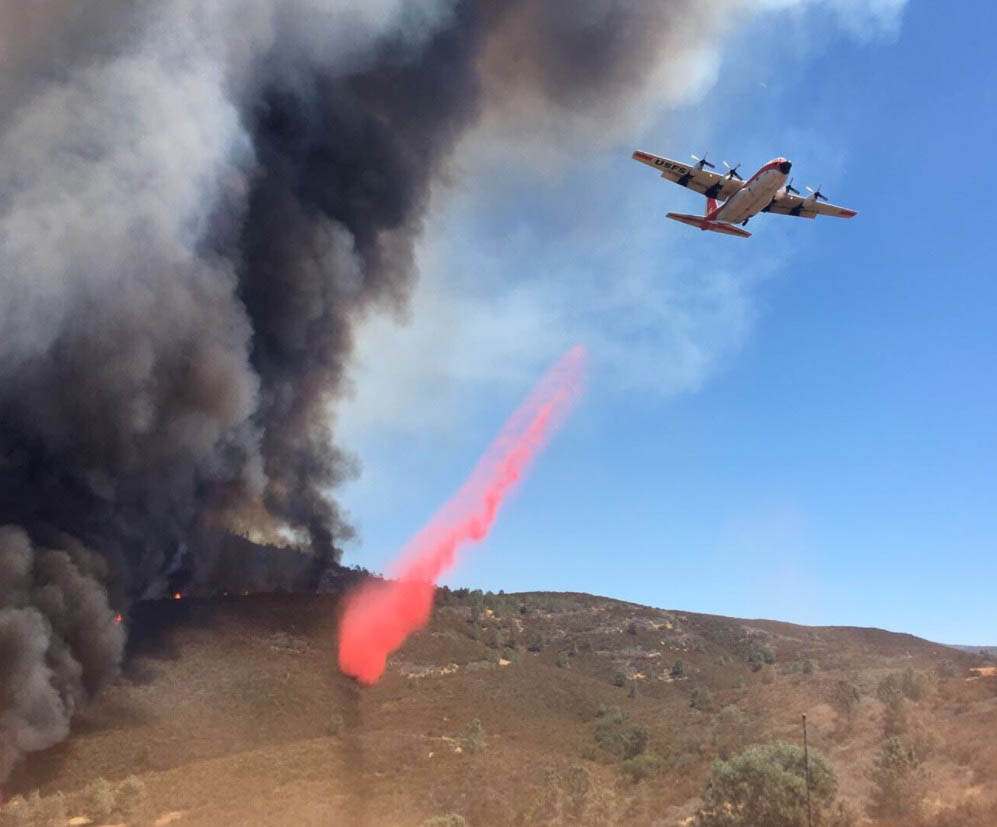
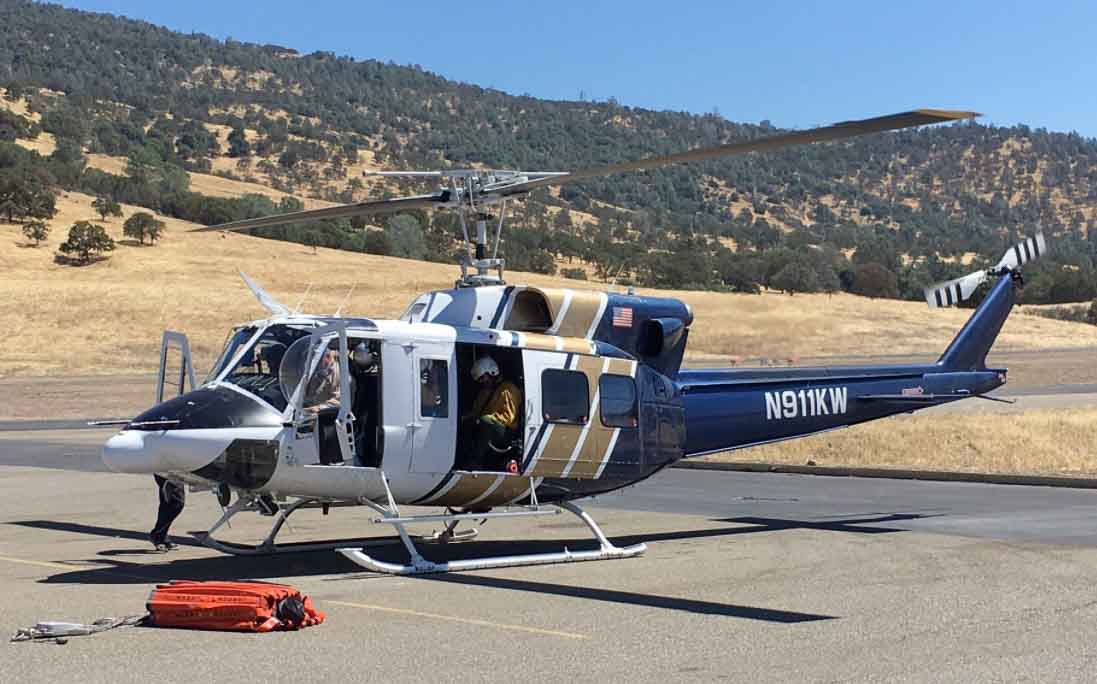
Airport used for refilling air tankers with retardant on Detwiler Fire ran out of fuel

Most of the large air tankers working on the Detwiler Fire at Mariposa, California are reloading with retardant at Castle Airport 25 miles west of the fire. When an air tanker needs fuel, they will often have it pumped onboard at the same time the retardant tanks are being refilled. And sometimes a pilot will prefer to work a fire with less than a full tank of fuel so they can carry more retardant. They will have to refuel more often, but the weight savings is very important.
On Wednesday, according to a spokesperson for CAL FIRE, the vendor at Castle Airport ran out of fuel, so air tankers needing more had to divert to Mather Airport southeast of Sacramento to get fuel, and then fly to Castle for retardant before returning to the fire. The spokesperson said that by Thursday the fuel shortage had been resolved.
Fire officials are establishing a retardant site for helicopters so that they can drop long term retardant on the fire rather than water, which is less effective. This was also done on the Whittier Fire, as we reported a week ago. Below is the video from that fire.
DC-10 sets company record for hauling retardant
The operator of the three DC-10 Very Large Air Carriers, 10 Tanker Air Carrier, announced today that they set a company record yesterday, July 18, when Tanker 911 flew 10 missions in less than six hours of flight time to deliver 108,000 gallons of retardant to the Detwiler fire. That’s 10,800 gallons per sortie.
It is our understanding that they were reloading at Castle Air Force Base 25 miles west of the fire. Another one of the company’s DC-10’s, T-912, was also working the fire.
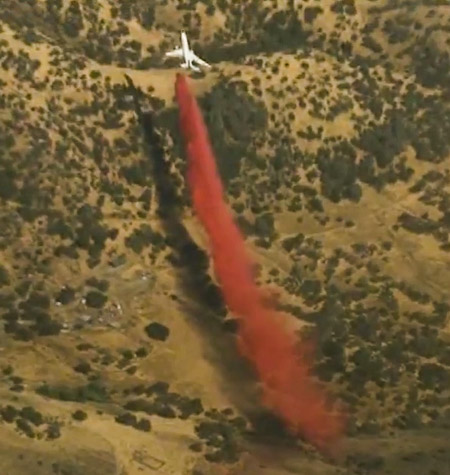
Aerial firefighting footage, including an air tanker’s first fire drop
This video footage that streamed live on KTVU July 11 starts with a fire at an industrial facility near Doolittle and Eden in San Leandro, California. Then the helicopter flies over to a vegetation fire in the San Jose foothills that was threatening homes at Claitor Way and Lariat Lane. It appears the fire started near structures and continued to spread through the rolling hills. The video captures many helicopter water drops, and also the first retardant drop on a real fire by Coulson’s newest air tanker, Tanker 133, an L-382G, which is a civilian variant of the C-130. (Articles tagged T-133 on Fire Aviation are here.)
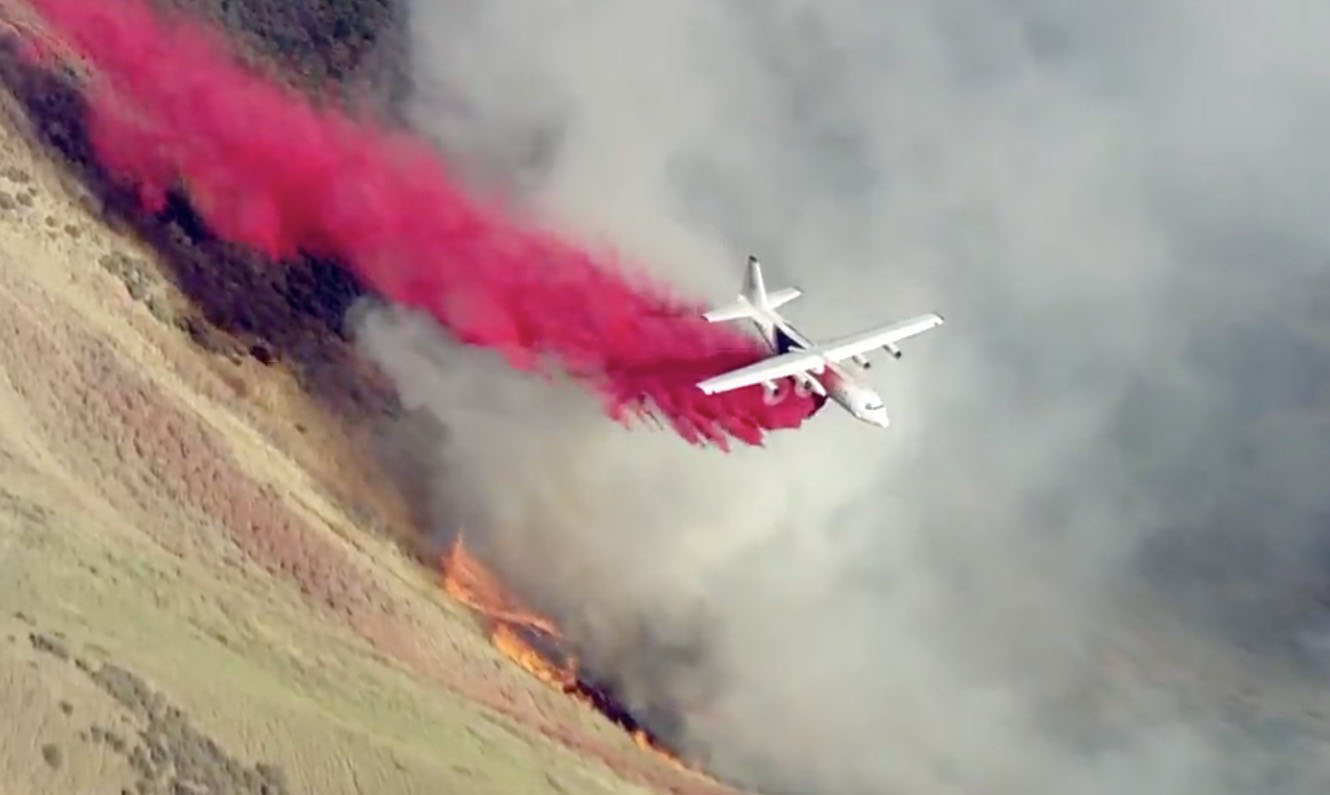
You probably don’t have the patience to sit through an hour and a half of video, so here’s a tip. T-133 first appears at about 1:07:30. It makes two passes then drops the third time. After that there’s many water drops from CAL FIRE and other helicopters. There are also several S-2T drops; I was able to see one number, T-83. I skipped around quite a bit looking for interesting activity.
Many of the helicopter drops after the 1:09 mark were an attempt to stop a portion of the fire that was burning in a steep canyon that had heavy fuels. Dozers were following behind the water and retardant drops, putting in fireline.
All of these images are screengrabs from the KTVU video.

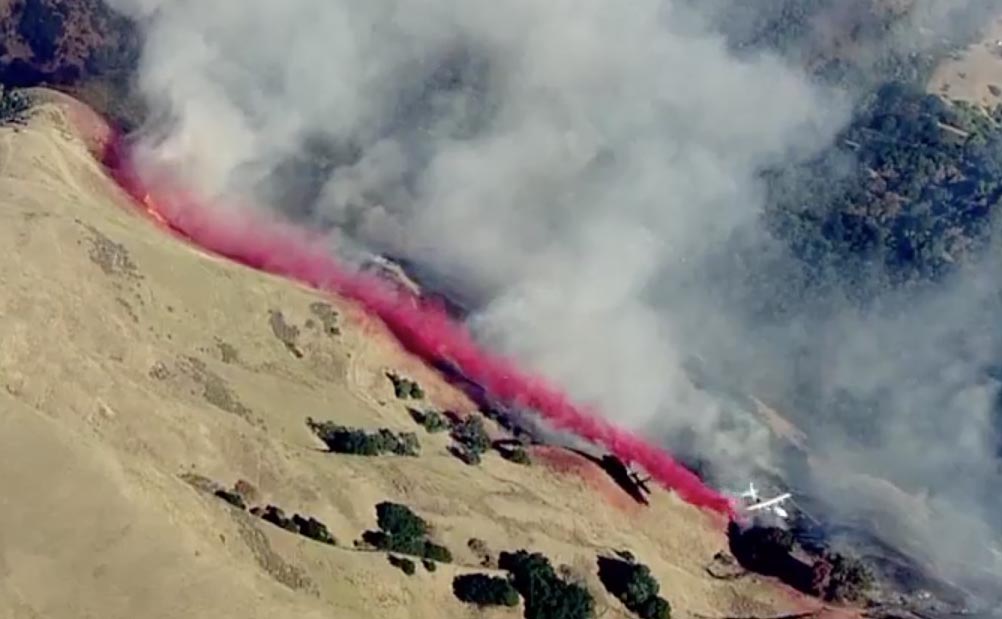
I want to congratulate the KTVU camera operator. Like many of his or her brethren in California who have probably covered many, many wildfires, they zoomed in on the air tankers as they were maneuvering, but as they dropped retardant the camera operator zoomed out so you could see the entire drop and where the retardant landed. Sometimes in this video they would linger on that spot for a while so you could see the effect on the fire. I have noticed that video shot from helicopters in other parts of the country often maintain the close shot of the aircraft as it drops and flies out of the area, and you often can’t see where the retardant landed. An example is in this article; check out the video at 2:44:00 (yes, that’s 2 hours and 44 minutes).
MAFFS C-130’s activated in California
Above: MAFFS 6 being prepared for activation in California. In the foreground is an air compressor used to fill the compressed air tanks on MAFFS aircraft. Photo credit: 146 Airlift Wing.
(Originally published at 7:29 p.m. MDT July 10, 2017)
California has activated two National Guard C-130 aircraft to assist with combating wildfires in the state. The Modular Airborne FireFighting Systems (MAFFS) that convert a military aircraft into an air tanker can be installed in a C-130 in a matter of hours. The units hold up to 3,000 gallons of water or retardant that is forced out of the tanks by compressed air. The two C-130’s are with the 146 Airlift Wing at Channel Islands in Southern California.
The MAFFS program consists of eight units located at four military bases in the western United States — Channel Islands, Cheyenne, Colorado Springs, and Reno. Each base has two of systems except for the new kid on the block, Reno — one of their two MAFFS is being used by a C-130 that is in the process of being transferred from the Coast Guard to the U.S. Forest Service.
The concept behind the MAFFS is to have surge capacity. The units can be activated when ongoing wildfires reduce the ability of the 20 large air tankers on federal exclusive use contracts to respond to new initial attack and extended attack fires.
Governors in the four states have the authority to activate their one or two National Guard MAFFS as needed. The National Interagency Fire Center can also activate them.
In the video below MAFFS 6 is being tested after it was installed in the C-130 at Channel Islands. Normally they drop fire retardant, rather than water.
@146AirliftWing troops activated thru @Cal_OES and @CALFIRE worked thru the night to ready #MAFFS C130s to fly. pic.twitter.com/5dCv9nUooM
— 146thAirliftWing (@146AirliftWing) July 10, 2017
Yamaha brings their crop dusting helicopter drone to the U.S.
Above: A Yamaha helicopter drone used in the Napa Valley to spray a fungicide over a vineyard. Screen grab from the Yamaha video below.
Yamaha helicopter drones have been used for 25 years in Japan for spraying chemicals over rice and other crops. Recently the company has been testing the aircraft in California’s Napa Valley to spray a preventative fungicide to keep powdery mildew from forming on grapes.
It makes you wonder if a helicopter drone would ever be used to spray or drop water or retardant on a wildfire. In 2015 Lockheed Martin and K-Max demonstrated the use of a full size drone, an optionally-piloted K-MAX, to haul external loads and drop water.
